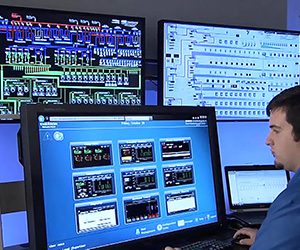Security cameras and surveillance systems have been around for decades, but the technology behind the hardware has changed dramatically over the years. Gone are the days of analog cameras feeding racks of looping VHS tape machines whirring away in the security office. The clarity and efficiency of digital imagery, not to mention practically unlimited storage capacity, has relegated tape based systems to the technology trash heap.

Today, advancements in networking capability along with software systems that integrate multiple and disparate hardware feeds are helping to create multi-function smart systems. Municipal security organizations, working with security technology companies in the private sector have been on the forefront of adopting this new technology. A case in point is the city of Houston, Texas.
According to a recent issue of Security Technology Executive, isolated locations in the city using single purpose security systems have, with the help of network technology, been linked together to supply different types of information to a central system. For example, the information from a visible light camera on the roof of one company’s warehouse can be integrated with the information from a thermal imaging camera in another location and combined with yet another ballistic detection system in a third location. This gives law enforcement and first responders much richer information sets to work with as they respond to an incident, or better yet, as they mobilize to prevent an incident from even occurring in the first place1.
This technology all has to be maintained and monitored of course, and so the human element is still a big part of the equation. However, the software that integrates these systems can react instantly to patterns and combinations of information that might take a human longer to recognize. The human system operator must still make crucial decisions and deploy appropriate resources, but he or she will have gained valuable time through the assistance of the smart security system.
Of course, the ultimate goal is increased safety and security for the city’s population, but that brings with it economic side benefits. All substantial cities engage in marketing strategies and messaging to entice businesses and residents to make that city their home. Those that emphasize safety and the use of smart technology to protect residents are likely to attract larger and better quality businesses looking for a safe location to set up shop and provide quality of life enticements for their employees.
A safe city is a prosperous city and so security system providers and municipalities are joining forces to accelerate advancements and make their cities smarter and safer.
1Lasky, Steve; The Convergence of Secure and Smart Security Technology Executive Sept., 2017

 In the last decade or so, video surveillance has become a ubiquitous tool in security systems across an enormous array of markets. Networked security cameras are deployed by municipalities, in public spaces, and throughout businesses and organizations ranging from hospitals and churches to manufacturing, retail and corporate offices. Of course, the most obvious benefits of surveillance systems are that they create a deterrent to criminal activity and that they help to identify perpetrators once an act has been committed.
In the last decade or so, video surveillance has become a ubiquitous tool in security systems across an enormous array of markets. Networked security cameras are deployed by municipalities, in public spaces, and throughout businesses and organizations ranging from hospitals and churches to manufacturing, retail and corporate offices. Of course, the most obvious benefits of surveillance systems are that they create a deterrent to criminal activity and that they help to identify perpetrators once an act has been committed.